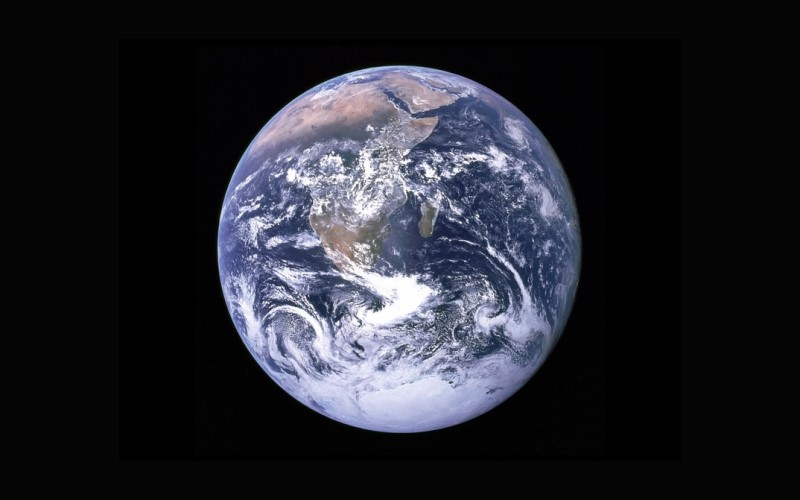Most of Earth’s minerals need living organisms to form. Young people recommend consuming less: smartphones, meat and alcohol would be good starts.
Mineral evolution
In the feasting spirit, let’s start with an amuse-bouche: what was the very first crystal in the cosmos? Not just on Earth but in the whole cosmos. And why was it the first? It’s a hard one, I agree.
I’ve been wanting to include this video in my weekly round up for several months but haven’t been able to find the right occasion. Perhaps over the next month, loyal reader, you will have a spare 45 minutes. I still have a problem though: how to enthuse you to watch a video about boring old rocks? Minerals to be precise: chemicals with a unique solid-state structure — silica, quartz, dolomite, feldspar, diamond and the like. How about if I say that the evidence in this video has changed the way I think about the relationship between the inorganic and the organic, between “dead” rocks and living organisms, and about the evolution of our planet.
It’s prosaic to observe that the inorganic physical world has influenced the origin and the evolution of life but Robert Hazen demonstrates that minerals specifically were essential for the emergence of life on Earth about 4 billion years ago and influenced the form it took. More surprising for me, however, is that Hazen shows that about 70 per cent of the 5000 or so known minerals on Earth (there are probably about another 1500 waiting to be discovered) would not exist were it not for the presence of living organisms. According to Hazen, “New minerals arise through combinations of chemical, physical and biological processes” and he tells the story of the co-evolution of the geosphere and the biosphere over Earth’s 4.6 billion year history through 10 chronological stages.
Not only that though, Hazen shows that the minerals that are dependent on living organisms for their formation have emerged progressively over time (“mineral evolution” Hazen calls it somewhat controversially). As life on Earth evolved and changed the physical and chemical environment, so a wider range of minerals became possible.
About two-thirds of all Earth’s minerals cannot form in an anoxic environment and the big break through occurred around two billion years ago when cyanobacteria evolved and started using photosynthesis to produce oxygen from photosynthesis. Very slowly, this lifted the concentration of oxygen in the atmosphere to about one per cent and the number of minerals on Earth increased by about a thousand. Western Australia features in this early part of the story with the stromatolites in Shark Bay and the banded iron formations in the rocks of the Pilbara providing links back to the developing life on Earth 2-3 billion years ago.
About 500 million years ago, life began to appear on the land and the terrestrial biosphere formed. Plants emerged, biosynthesis increased dramatically, the atmosphere’s oxygen level increased to around 20 per cent and more new minerals formed.
That’s not the end of the story of the co-evolution of the biosphere and geosphere, though. Life may be influencing the most powerful forces in Earth’s crust, the forces of plate tectonics. Specifically, biological processes may be increasing the rate at which subducted plates of rock slide down into the mantle. Of greater concern to humanity’s long term survival, though, is that when plankton evolved about 200 million years ago they started forming carbonates in the ocean for the first time. These carbonates fall to the ocean floor and are taken into the mantle by the subducting tectonic plates. This could result in all Earth’s surface carbon disappearing in the next few hundred million years and the extinction of all life on Earth. The evolution of life may have engineered its own ultimate demise. A story worthy of Shakespeare.
Another question that Hazen tackles is which aspects of Earth’s mineral development occurred purely by chance and which were inevitable or necessary according to natural laws? Hazen estimates that the chance of exactly reproducing Earth’s current menu of minerals if we replayed the tape of history is 1 in 10320. The conclusion: Earth is unique in both its biosphere and its smorgasbord of minerals as result of the interaction of chance and necessity on the one hand and physical, chemical and biological processes on the other.
I hope I’ve provided enough tasty morsels to tempt you to join Hazen’s mineral feast. But if that’s all a bit too serious for you after your plum pudding, why not watch Eric Idle’s more light-hearted take on our place in the universe. The original is great but the reunion version adds a new dimension and is also worth a viewing.
Listen to the young
“Buy less stuff — help the planet and yourself”. No, that’s not my advice. It comes from the young people of Fridays for Future. Their advice for the “era of less” is:
- Stop shopping to stop consuming so much. Avoid spontaneous buying. Purchase to a plan.
- Avoid plastic. Use glass, steel, cloth, wood and reusables. Tell companies and restaurants to stop using plastic packaging.
- Avoid fossil fuels. Less car travel and more walking, cycling and (green) public transport.
- Demand Right to Repair laws and learn how to fix things.
- Reduce garbage. Compost where possible.
- Eat plants. Eat local. Grow your own.
- Avoid fads and trends. Buy second hand.
- Make your own.
I’m a big Pete Seeger fan, so I love the street furniture below.
Mobile phone emissions
But sometimes you just have to replace an old item to remain functional. I have been very happy with my hand-me-down Apple iPhone 5S, released in September 2013. I don’t use it for much — a few phone calls and texts, taking photos and accessing half a dozen apps. I’m such a low user that I’m on the cheapest deal from my internet provider. However, I decided to update because I wasn’t able to download any new apps or even the current versions of the apps I already have. This can be inconvenient for really important tasks like using the NSW Service app to enter a restaurant or watching Burnley play Premier League football on Optus Sport. Which is all by way of introducing the, I’m sure, widely accepted view that more people should be just like me! The average, still fully operational, new smartphone is replaced after two years and 90 per cent of the phone’s carbon emissions to that point relate to its manufacture. It takes about 10 years for the energy required to operate a smartphone to equal the energy involved in making it. Annually, the energy used to make smartphones globally is roughly equal to India’s total energy usage. Energy use and emissions aren’t the only problem though. Mining the gold is a major cause of tropical deforestation and the mercury and cyanide by-products contaminate local water bodies; lithium mining is associated with heavy water loss; and at the end of it all there’s the toxic e-waste. Perhaps you could stress-test the commitment of your kids and grandkids to Fridays for Future by delaying their new smartphone until next Christmas. Yes??
Warming world doubles divorce rate and homosexual relationships
Albatrosses, which can live for decades, are extremely faithful and usually pair for life, perhaps because the pair spend most of the year apart and only get together for breeding and rearing. When separation does occur it’s often associated with the pair’s failure to fledge a chick and is usually initiated by the female who, as it turns out, finds it easier to find a new mate. A 15-year study has shown that albatross divorce occurs more frequently in years when the sea surface temperature is higher. Cooler water is more nutrient rich and warmer seas may disrupt the delicate balance between the availability of food and the arrival of the pair at the nesting site for breeding. Warmer seas and less food may also reduce the health and condition of the would-be parents by forcing them to fly further to find food. If at the end of a tough breeding season the pair have failed to raise a chick successfully, the female may decide the male is a dud and move on. Over the past 15 years, the number of albatrosses on the Antipodes Islands, 900 km south of New Zealand, has declined by two-thirds, but the proportion of unattached males has increased. Overall result of a warmer world for albatrosses: lower breeding success, population decline, more divorces and an increase in male-male couples, some of which probably have difficulty finding a herring cake supplier for their nuptials.
Happy Christmas
It’s no secret that food production accounts for 30 per cent of greenhouse gas (GHG) emissions but how do different people’s diets compare. A study of the diets of 212 adults in the UK, involving calculation of the emissions associated with over 1300 different food items they consumed, reveals that meat is responsible for 32 per cent of food-related emissions, drinks 15 per cent (with tea, coffee and alcohol being the major sources), dairy 14 per cent and confectionery 8 per cent. The emissions from non-vegetarian diets were 59 per cent higher than vego diets. Broadly speaking, healthier diets had lower emissions – human and environmental health go hand in hand. So if you want to save the planet, maybe you should abandon the turkey, ham, Christmas pudding, mince pies, chocolate and alcohol over Christmas and consume beans, barley, tofu, Granny Smiths and tap water on the 25th. Especially you blokes: men’s food-related emissions were 41 per cent higher than women’s, mainly attributable to their higher meat and alcohol intakes. Interestingly, the average daily GHG emissions per person were 7.4kg of CO2-equivalent, and age and body weight didn’t make any difference to the results.
To finish 2021, Mrs Biden’s White House Christmas decorations. Her feller may have had some tough times since his inauguration but there’s one thing I know for sure, he’s a darned sight better for the people and environments of the USA and the world than the alternative that was on offer.
Regardless of your spiritual and political affiliation/s, I wish you all a happy Christmas and a peaceful, healthy and environmentally sustainable 2022. Back on January 23.
Peter Sainsbury is a retired public health worker with a long interest in social policy, particularly social justice, and now focusing on climate change and environmental sustainability. He is extremely pessimistic about the world avoiding catastrophic global warming.



